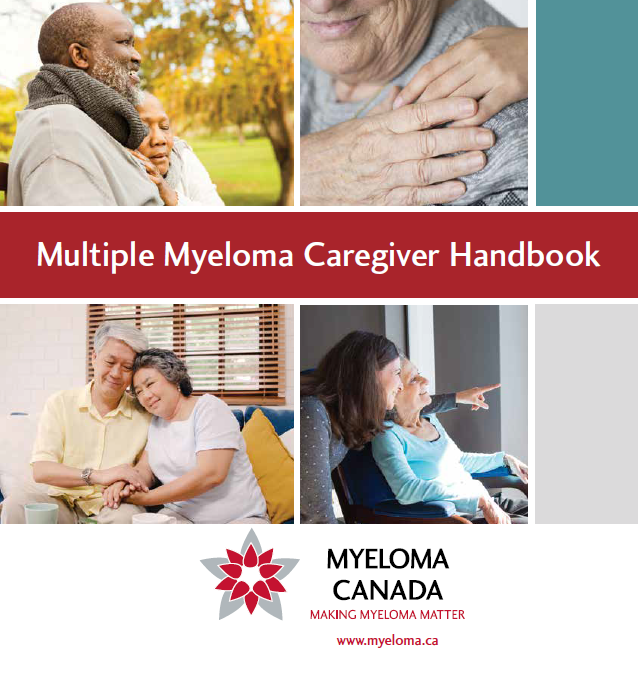Understanding the disease
What you need to know in order to support your loved one from diagnosisThe process of identifying a disease by its signs and symptoms., through treatment, and beyond while taking care of your well-being.
What is myeloma?
Myeloma is the second most common form of blood cancerA term for diseases in which malignant cells divide without control. Cancer cells can invade nearby tissues and spread through the bloodstream and lymphatic system to other parts of the body., yet sadly most people have never heard of it. Myeloma is associated with the abnormal behaviour and uncontrolled growth of a type of white blood cell—the plasmaThe liquid part of the blood in which red blood cells, white blood cells, and platelets are suspended. cellThe basic unit of any living organism.. Plasma cellsSpecial white blood cells that produce antibodies. The malignant cell in myeloma. Normal plasma cells produce antibodies to fight infection. In myeloma, malignant plasma cells produce large amounts of abnormal antibodies that lack the capability to fight infection. The abnormal antibodies are the monoclonal protein, or M protein. Plasma cells also produce other chemicals that can cause organ and tissue damage (i.e. anemia, kidney damage and nerve damage). are made in the bone marrow—the spongy tissue found inside bones—and when they’re healthy, they are an important part of your body’s immune systemThe complex group of organs and cells that produces antibodies to defend the body against foreign substances such as bacteria, viruses, toxins, and cancers.. Plasma cells help fight infection by producing antibodies that attack germs.
In myeloma, the plasma cells become cancerous (myeloma cells) and interfere with the production of healthy blood cellsMinute structures produced in the bone marrow; they include red blood cells, white blood cells, and platelets. in the bone marrowSpongy tissue that is found inside your bones. It is soft, fatty and full of blood vessels. Your bone marrow is where most of the blood cells in your body are made.. Instead of producing antibodies that fight infection and disease, myeloma cells produce abnormal proteins (called monoclonalA clone or duplicate of a single cell. Myeloma develops from a single malignant plasma cell (monoclone). The type of myeloma protein produced is also monoclonal; a single form rather than many forms (polyclonal). The important practical aspect of a monoclonal protein is that it shows up as a sharp spike (M spike) in the serum electrophoresis test. protein, monoclonal immunoglobulin, or M-protein). These can cause serious complications and affect different parts of the body such as the bones and kidneys. Although myeloma is a blood cancer, sometimes myeloma cells collect and form a plasmacytomaA collection of plasma cells found in a single location rather than diffusely throughout the bone marrow, soft tissue, or bone. (a tumour made of plasma cells).
The cause or causes of myeloma remain relatively unknown, but there is increasing research that suggests possible associations between myeloma and a decline in immune function, geneticInherited; having to do with information that is passed from parents to children through DNA in the genes. factors, and the environment.
The number of Canadians diagnosed with myeloma is steadily increasing year after year. While there is not yet a cure, people with myeloma are living longer and better lives thanks to recent breakthroughs in research and treatment.

Continue learning about myeloma
As you become more familiar with myeloma and your loved one’s experiences, the information you’ll need and the questions you’ll have will likely grow. These sections are a good place to start, but there is a wealth of information in both the Recently diagnosed and Living with myeloma sections of this website.
Be sure to also check the Resources section for more in-depth information on a particular topic.

Being a caregiver—or providing care—can take many forms, and the needs of your loved one may change throughout their journey with myeloma.

For more information, download the Multiple Myeloma Caregiver Handbook
If you are supporting a loved one living with myeloma, you are a caregiver. Myeloma Canada designed this Handbook to provide you with practical information about caring for your loved one and maintaining your own well-being.




